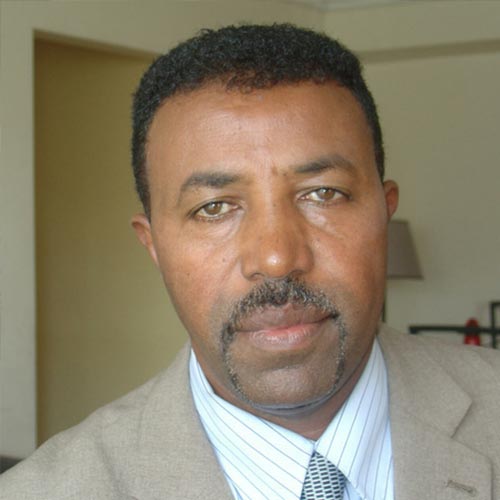
Who Enabled the Capitol Insurrection?
In the aftermath of the siege of the Capitol, even as prosecutors have begun to track down and arrest hundreds of the insurrectionists, questions swirl about who enabled the events of January 6th. To date, five people died in the attack, including one Capitol Police officer.
Even Republican Senator Mitch McConnell has acknowledged President Trump’s culpability for having incited the mob. The President repeatedly rebuffed requests to call up the National Guard––a far cry from his response to protests and riots over the summer. He circulated and amplified disinformation about the election for months, which fueled the insurrection. Even though most have now condemned what happened at the Capitol, many Republican Members of Congress likewise spread propaganda and ultimately voted to decertify the election, lending credence to the insurrectionists’ cause. And right-wing media, as well as social media, created the requisite misinformation ecosystem that contributed to the Big Lie.
But some have speculated that those responsible extend far beyond the actors and actions described above. Conspiracy theories and conjecture abound. Let’s look at the facts.
Who enabled the insurrection?
1. Members of Congress
On Tuesday, January 13th, Congresswoman Mikie Sherrill (D-NJ) claimed that she had seen Republican Members of Congress leading “reconnaissance” tours on January 5th. A veteran, Sherrill specifically credited her Navy service for training her to spot the suspicious activity. Due to COVID-19 restrictions, members of the public could only be in the Capitol at the express invitation of a sitting Member of Congress or their staff.
Later, Congressman Steve Cohen (D-TN) revealed that he and Congressman John Yarmuth (D-KY) had both seen freshman Lauren Boebert (R-CO) guiding a large group of people around the Capitol in the days immediately before January 6th. Boebert denied having given a tour. However, on January 6th, she tweeted “Today is 1776,” which, for some people, would have clear implications. Independent security officials should investigate whether or not Members of Congress, Boebert included, aided the mob in any way.
2. State and Local Officials
A number of Republican elected officials at the state and local levels were involved in the events of January 6th. State Senator Amanda Chase (R-VA), a leading Republican gubernatorial candidate in Virginia, attended the “Stop the Steal” rally. Previously, she had accused Democrats of “committing treason” by loosening voting restrictions for COVID-19, and called on President Trump to declare martial law to overturn the election.
The district director for Republican Congressman Bob Good (R-VA) also attended the January 6th rally. And a state representative in West Virginia resigned after he was arrested for taking part in the insurrection; he had filmed himself storming the Capitol.
In the days before January 6th, many local Republican chapters posted a Facebook flyer calling for “Operation Occupy the Capitol” and declaring themselves “#1776Rebel[s].” When an organizer of the “Stop the Steal” rally tweeted, “I am willing to give up my life in this fight,” the Arizona Republican Party retweeted his message with the rejoinder: “He is. Are you?”
Whether or not these officials participated in the mob, their presence and voices legitimized and encouraged the Big Lie that led to it.
3. Funders/Organizers
At least half a dozen former Trump campaign officials were listed as staff for the January 6th Trump rallies at the Capitol, indicating that the gatherings were not necessarily as driven by grassroots activists as some have claimed. Many Republican “dark money” groups, which, due to their non-profit status, do not have to disclose their donor lists, funded and organized the events. The Republican Attorneys General Association, a PAC dedicated to electing Republican Attorney General candidates nationwide, sent out robocalls encouraging supporters to attend the “Stop the Steal” rally. Charlie Kirk bragged that his organization, Turning Point USA (a group that promotes right-wing talking points on college campuses), would be sending more than 80 buses “full of patriots” to the rally, although they ended up sending seven.
Many different individuals and groups helped to organize and fund the many rallies that ultimately devolved into the storming of the Capitol. Although they do not bear direct responsibility for the horrific events of January 6th, the violence would not have happened without their support.
4. Capitol Police
Many of the Capitol Police officers were heroes. Eugene Goodman, with his quick thinking, diverted an entire mob from the Senate Chambers, buying just enough time for Vice President Pence and the remaining Senators to flee. But some failed their country.
Two Capitol Police officers have been suspended and 10 are under investigation for their conduct during the insurrection. One officer joined the mob to pose for selfies. Another put on a MAGA cap and began to direct the mob inside the Capitol. Some insurrectionists told the New York Times that a Capitol Police officer gave them directions to Chuck Schumer’s office. Nearly 30 police officers from across the country were also present at the Capitol to help storm the building.
The Chief of Capitol Police and both the House and Senate Sergeants-at-Arms have resigned for their failures to keep the Capitol safe. An investigation is ongoing.
***
Unlike those who killed Capitol Police officer Brian Sicknick, the four groups described above do not bear direct responsibility for the violence (aside from a few individuals). But, by enabling and parroting the Big Lie, they all made violence possible.



